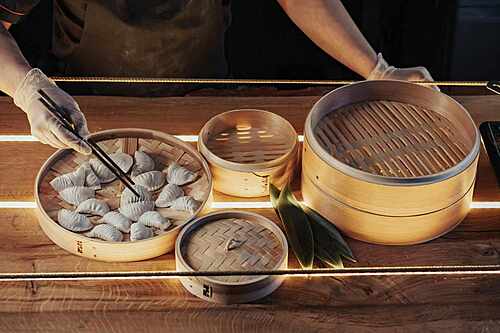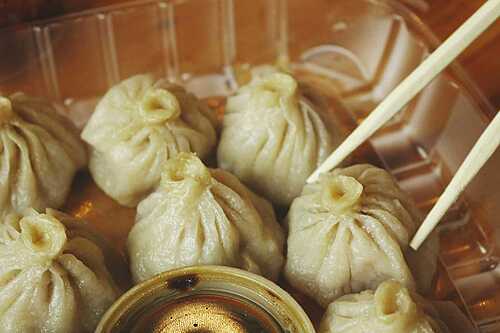
Introduction to Cantonese Cuisine
When it comes to Chinese cuisine, Cantonese food stands out for its delicate flavors, fresh ingredients, and remarkable variety. Hailing from Guangdong province in Southern China, Cantonese dishes have captured hearts and taste buds across the globe, earning their place as a gold standard in traditional Chinese cuisine. Whether you're a seasoned foodie or someone seeking new culinary adventures, this guide to Cantonese cooking will introduce you to its unique charm, iconic dishes, and how to savor its authentic flavors.
What Makes Cantonese Cuisine Special?
Cantonese food is celebrated for its emphasis on the natural taste of ingredients. Unlike heavily spiced or overly complex recipes, traditional Cantonese cuisine focuses on subtle, well-balanced flavors. Techniques like steaming, stir-frying, and slow-roasting are common, preserving the natural essence of the food while creating delicious, healthy dishes.
But it’s not just the cooking techniques that make Cantonese dishes special. The cuisine is also known for its incredible variety. With access to abundant seafood, meats, and fresh vegetables, Cantonese chefs incorporate the best of nature into their creations. They also have a penchant for exotic ingredients, turning seemingly everyday food into culinary masterpieces.
14 Must-Try Cantonese Dishes:

1. Dim Sum
No Cantonese food guide would be complete without mentioning dim sum. These bite-sized, flavor-packed dishes are served in small bamboo baskets or plates, making them perfect for sharing. Popular options include shrimp dumplings (har gow), pork buns (char siu bao), and sticky rice wrapped in lotus leaves (lo mai gai). Dim sum runs the gamut from savory to sweet, offering something for every palate.
2.Sweet and Sour Pork
A classic in both Cantonese and Chinese-American cuisine, sweet and sour pork offers the perfect balance of tangy and savory flavors. Made with juicy pork pieces coated in a bright red sauce (a mix of vinegar, sugar, and ketchup), this dish hits all the right notes. Add chunks of pineapple and bell peppers, and you have a vibrant plate loved worldwide.3.Char Siu (Chinese BBQ Pork)
4.Wonton Noodle Soup
5.Steamed Fish with Ginger and Scallions
6.Claypot Rice
7.Roast Goose

8.Milk Tea
While technically a drink, Hong Kong-style milk tea is a staple of Cantonese dining culture and deserves mention. This creamy tea is made by steeping black tea leaves and then straining them through a cloth filter for a smooth, rich texture. Add evaporated or condensed milk, and you’ve got the perfect complement to your dim sum.
9.Egg Tarts
End your meal on a sweet note with egg tarts. These flaky pastries are filled with a smooth, custard-like egg filling that’s lightly sweetened and perfectly creamy. Originally influenced by Portuguese pastéis de nata, Cantonese egg tarts have become a globally beloved dessert.
10.Cheung Fun (Rice Noodle Rolls)
Cheung fun is a favorite dim sum dish made with soft, steamed rice noodle sheets that are filled with ingredients like shrimp, barbecued pork, or vegetables. These delicate rolls are drizzled with soy sauce, creating a savory and silky texture that melts in your mouth.
11.Salt and Pepper Squid
Crispy and flavorful, salt and pepper squid is a winning appetizer or snack. The squid is lightly coated in seasoned flour, fried to golden perfection, and then tossed with salt, crushed black pepper, and chili. A squeeze of fresh lime takes this dish to the next level.
12.Yum Cha
An integral part of Cantonese eating culture, yum cha translates to “drinking tea” and represents the full dim sum experience, complete with tea pairings. Though technically a tradition and not a dish, yum cha features an array of dim sum items served alongside fragrant teas such as jasmine or pu-erh.
13.Lobster with Ginger and Scallions
For a touch of luxury, lobster with ginger and scallions is a standout. The lobster meat is stir-fried with a fragrant sauce made of ginger, garlic, and green onions. The light, aromatic flavors enhance the sweetness of the lobster, making this dish a crowd-pleaser at banquets.
14.White Cut Chicken
White cut chicken is a simple but elegant dish that highlights the natural tenderness of the chicken. Prepared by poaching, the chicken retains its juiciness and is served with a flavorful ginger-scallion dipping sauce. This dish is often a centerpiece in traditional Cantonese meals.
Tips for Enjoying Authentic Cantonese Food
Visit Cantonese Restaurants
Seek out reputable Cantonese restaurants in your area. Look for spots that specialize in traditional dishes like dim sum or roast meats.
Explore Chinatowns
Many major cities have Chinatowns filled with family-run eateries offering authentic Cantonese food at reasonable prices.
Try Cooking at Home
With access to Asian grocery stores and online recipes, you can recreate some traditional Cantonese recipes in your own kitchen. Start with simple dishes like steamed fish or stir-fried vegetables with oyster sauce.
Travel to Guangdong or Hong Kong
For the ultimate experience, plan a trip to the birthplace of Cantonese cuisine. Hong Kong and Guangzhou are famous destinations for food lovers, offering everything from street food to five-star dining.
Discover the Magic of Cantonese Dishes
Whether you're enjoying a lively yum cha brunch, mastering a homemade char siu, or exploring the bustling streets of Guangzhou, diving into Cantonese cuisine is an unforgettable journey. To plan your culinary adventure, check out the Guangzhou Food Guide on Zhujianger, or explore top picks in our Best Dim Sum in Guangzhou blog.
If you're visiting for business, don't miss our Canton Fair Buyer Guide and full City Guide for where to eat, drink, and explore. For more inspiration, browse China Highlights’ overview of Cantonese cuisine, explore Michelin-rated restaurants in Hong Kong, or dig into the history on Wikipedia. Hungry yet? Start exploring — one bite at a time.


